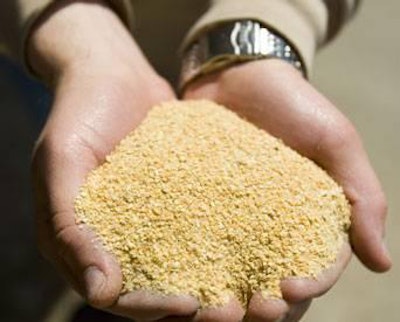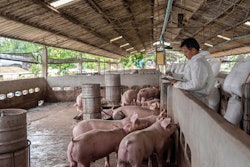
CFO says effects of African swine fever in China have lifted margins for soybean processing
The African swine fever (ASF) outbreak in China is worse than previously thought and will continue to affect animal feed producers, an executive at Archer Daniels Midland Co. (ADM) said.
According to a Reuters report, ADM Chief Financial Officer Ray Young told attendees at the Stephens Nashville Investment Conference this week that the disease’s effects have lifted margins for soybean processing for animal feed.
“We thought that the impact on the global meal market would be felt by the end of the year, the fourth quarter, back half of the year,” Young said in the report. “I think probably on a marginal basis, there’s been some positive impact. But the overall impact, we probably haven’t felt yet in terms of overall crush margins.”
ADM has benefited as more countries expand livestock production to make up China’s protein shortfall as a result of losses caused by ASF. The company has seen an increased demand for feed ingredients including soybean meal.
Young said the positive impact on the company’s margins could amount to $US500 million to US$600 million in incremental pretax earnings improvements forecast for 2020.
China’s feed usage
According to a recent report from Rabobank, China’s hog feed consumption is expected to drop by 40% in 2019. Overall, China’s animal feed consumption will drop by 17% in 2019, followed by a rally of 8% in 2020, the report said. Hog feed usage is expected to rebound by 5% in 2020 as a result of herd restocking.
While hog feed accounted for 54% of feed demand in 2018, Rabobank said, that number will drop to 39% in 2019 and 2020, with poultry feed gaining share. In 2018, poultry feed demand share was 35% (18% layer feed and 17% broiler feed), 6% aquafeed and 5% ruminant and other feeds.
“Driven by rising prices of animal protein and substitutional effects, other feeds – for broilers, layers and aqua – will see positive growth in 2019 and 2020,” Rabobank said.
Partially offsetting the drop in feed consumption is the high inclusion rates of soybean meal and corn in feed rations, Rabobank said. In 2019, soybean meal and feed corn demand is expected to drop by 6% and 12%, respectively. 2020 figures will depend on the inclusion ratios for that year.
Because of favorable pricing and trade distortions, soybean meal is substituting other protein meals. Soybean meal inclusion ratios in hog and poultry feed are forecast to increase by 10%, and by 20% in aquafeed.

















